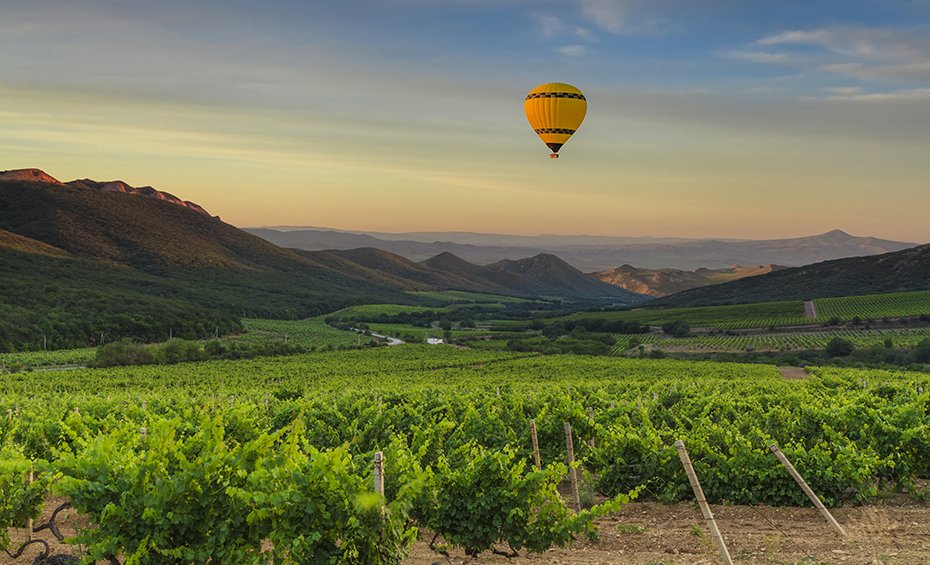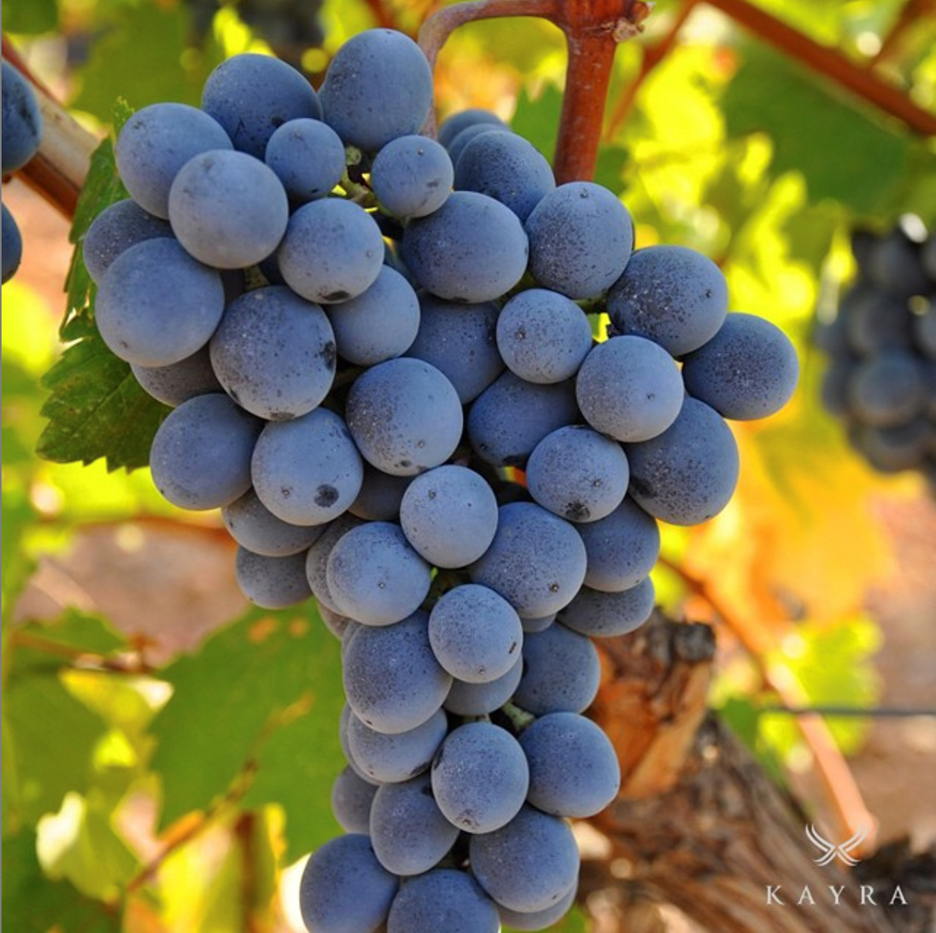POST
July 28 , 2021
Wine Routes of Turkey
Uncork and unwind… let the wines of Turkey guide your next adventure.

Turkey is often overlooked as a wine destination, but with the region’s sultry Mediterranean climate and deep-rooted history (including Hittite, Greek and Roman influence), it should come as no surprise that a rich wine-making tradition spreads its vines from ancient Antioch to the Aegean.
In fact, Turkey is one of the world’s top grape-producing countries, but for centuries, teetotaling Ottoman rule meant that the fermentation of grapes was only tolerated for non-Muslim communities. Still today, grapes find other uses in Turkish cuisine, like sweet grape molasses (pekmez) and stuffed grape vine leaves (yaprak sarma). A big shift came in 1923, when Mustafa Kemal Ataturk founded the Republic of Turkey and the ban on alcoholic beverages was lifted. Although, with the Turkish-Greek population exchange at the time, many of the old vineyards and wineries were left abandoned. By the late 20th century, the introduction of international grape varieties and a tourism boom had helped Turkey’s wine industry to really blossom.

Photo courtesy of @kayrawines
These days, it seems the winery scene within Turkey is on the verge of coming into its own, with more of a focus on traditional local grape varieties. However, with many smaller producers, a quite high tax on alcohol and tight restrictions, it’s harder for wineries to export. That means, unlike a Pinot or a Malbec, Turkish wine is not as easy to find at your local supplier or restaurant. Instead, to appreciate Turkish wines and grapes, it’s best to come to the land itself! A journey to discover Turkish wines means experiencing all the rest that Turkey has to offer at the same time – cities so ancient they’re Biblical, sparkling Mediterranean shores, mouthwatering cuisine, and a friendly atmosphere.
These are Turkey’s best wine routes:
Thrace Vineyards
We start in the north in the region of Thrace, bordered by Greece, the Aegean, the Black Sea and the Sea of Marmara. This area has a breezy climate and produces much of Turkey’s wine with international and local grape varieties. A pleasant day trip from Istanbul will bring you to wineries in Tekirdağ and Kırklareli. One of our favorite Istanbul escapes is a visit to Barel Wine House.

Photo courtesy of @barelbagevi
Wineries include: Chamlija, Arcadia, Barel, Barbare, Vino Dessera, Gurbuz, Saranta, Gülor, Doluca, Chateau Kalpak, Kayra Versus Dedeçeşme, Chateau Nuzun, Umurbey and Melen
Çanakkale Vineyards
Continuing just a little farther south you’ll come to the historic area of Çanakkale, famous for the shores of Gallipoli and its WWI battlefield sites and memorials. Ancient tales and history are brought to life at the excellent Troy Museum. Here along the Dardanelles Strait, you’ll find wine houses like the popular Suvla, which produces a variety of white, rosé and red blends, including an easy-drinking red wine made from the Karasakız grape. Take a ferry to the picturesque, former Greek island of Bozcaada, where you can relax for an overnight stay and also visit Corvus winery.
.png)
Photo courtesy of @suvlawines
Wineries include: Suvla, Gali, Doluca and Corvus
Aegean Vineyards
The Aegean wine route is the most popular with foreign visitors, as you can experience Turkey’s beautiful coastline facing Greece, with quaint villages and archaeological wonders like Ephesus, Pergamum and Aphrodisias. This area produces most of Turkey’s wines, especially using grapes like Chardonnay and Cabernet Sauvignon. When you go farther inland to Pamukkale, famous for its ancient city, cliffside limestone pools and hot springs, you find vineyards that harvest a lot of Çalkarası grapes, great for making rosé and red wines. You could easily spend a week in this area, driving down from Istanbul, through the vineyards of Çanakkale, then staying around the seaside city of Izmir or Kuşadası to make day trips to nearby vineyards, ancient Ephesus, the pretty old Greek village of Şirince, and go inland to Pamukkale.

Photo courtesy of @sevilen_wines
Wineries include: Kastro Tireli, Selendi, Nif, Kavaklidere Pendore, Sevilen İsabey, Yazgan, Lucien Arkas, Yedi Bilgeler, Gıdatay, Pamukkale and Küp
Urla Vineyards
The laidback province of Urla, about a half hour from Izmir, is also part of the Aegean region, and deserves special mention with its own designated wine route. We recommend a long weekend in the area to focus on the 6 wineries of the Urla Wine Route, as well as the Çeşme peninsula. Alaçatı is a popular vacation spot, with pretty beaches and an old Greek town with traditional stone houses, cobbled streets and boho chic restaurants. The area is famous for its high-quality olive oil and fresh cuisine of seafood and local greens. From the port at Çeşme, you can even take a ferry over to the gorgeous, quiet Greek island of Chios. If you plan your trip for early autumn you’ll be in time for Urla’s wine harvest and possibly the Grape Harvest Festival, while a visit in springtime will give you the chance to see the annual Artichoke Festival or the Alaçatı Herb Festival.

Photo courtesy of @urlawines
Wineries include: Urla, Urlice, Mozaik, USCA, MMG and Limantepe
Cappadocia Vineyards
In Central Anatolia, you can find wineries positioned along the long and winding Kızılırmak River. These vineyards produce fruity, peppery reds from the Kalecik Karası grape, which originated nearby Ankara, Turkey’s capital. The white grape variety called Hasandede is also making a comeback. Cappadocia, with its volcanic terroir, is white wine country, producing crisp whites from Emir grapes. Most visitors to Turkey will come to see the unique geological formations, underground cave dwellings and balloon-filled sunrise of Cappadocia, so while you’re at it you may as well try some local wines!

Photo courtesy of @turasanwines
Wineries include: Turasan, Kocabağ, Gelveri, Kavaklıdere Côtes d’Avanos, Kavaklıdere Akyurt, Kalvi and Vinkara
Eastern Anatolia Vineyards
The winemakers of Eastern Anatolia can’t be overlooked, as they’re mainly responsible for some of the most favored Turkish red varieties, Boğazkere and Öküzgözü. Vineyards are embraced by the northern Euphrates River, set within the ‘cradle of civilization’ of ancient Mesopotamia. This is also where the origins of viticulture are being studied at sites like Göbekli Tepe, dating back 12,000 years. The region’s strong tannic wines pair well with the spicy, rich meat dishes of the area, featuring different variations of kebab, meatballs, and stuffed ribs. Although the Kayra winery in Elazığ isn’t open to visitors, you can find their wines at restaurants all over the country.
If you are traveling to Turkey’s southeastern border to see incredible ancient cities like Harran and Şanlıurfa, you definitely need to stop at Antioche Vineyards in Antakya (the ancient city of Antioch). They have revived the traditional Barburi grapes that are specific to the region. You are sure to have a unique wine and food experience you won’t soon forget!

Photo courtesy of @antioche.vineyard
Wineries include: Antioche, Kayra Versus Alpagut and Shiluh
Traveling the wine roads of Turkey is a delight not only for oenophiles, but also lovers of history, archaeology, beautiful beaches, and amazing food. So come and do as they do in Turkey – raise your glass and say ‘Şerefe’!